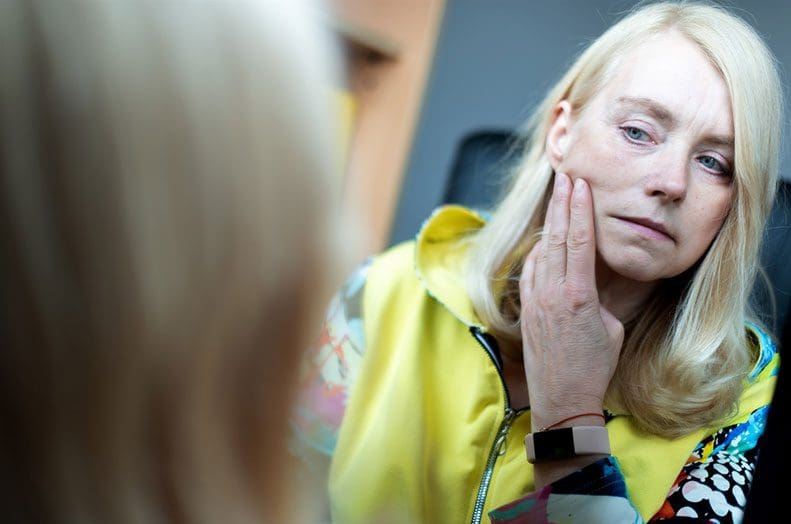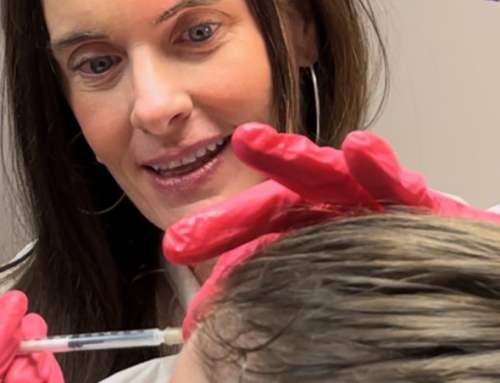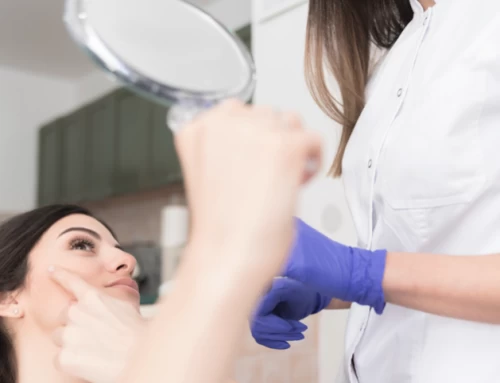
If you want to rejuvenate your skin but aren’t looking for big changes or a surgical approach, fractional laser treatment might be a great option to consider. Also known as Palomar fractional laser, fractionated laser and Fraxel®, let’s take a look at this treatment, how it works and who is a good candidate for it.
What Can Fractional Laser Target?
Fractional laser can be used to target and improve the look associated with many common signs of aging including reducing the appearance of fine lines and wrinkles as well as lessening the appearance of age spots/brown spots and sun damage.
Laser also can be used to lessen the appearance of scarring both from acne or some surgical scars. While a Fraxel® treatment often is used on the facial area, we also can use our laser on your hands to remove age spots and dark spots as well as to remove acne scars on your shoulders or back.
Fraxel® also can be used to treat actinic keratosis, which are pre-cancerous patches on the skin caused by prolonged sun exposure. These rough, scaly patches can develop into squamous cell carcinoma, but Fraxel®-type lasers can be used to remove these pre-cancerous patches before they develop into a much more serious condition.
What Is Fractional Laser & How Does It Work?
There are two common types of laser resurfacing – ablative and non-ablative. With ablative resurfacing, we remove the top layers of the skin cells and with non-ablative resurfacing, we heat up the skin tissue, but don’t actually remove those top layers.
Both types of treatments stimulate collagen production, which improves the look of the skin, reduces fine lines and reduces the appearance of scarring, etc. Both are considered safe and effective, and the difference mainly lies in the risk, recovery time and number of treatments needed.
Ablative treatments can be a bit riskier, and recovery time with ablative laser treatments typically takes a couple of weeks, during which time you might notice redness, swelling and tenderness. With non-ablative, you will experience some redness and swelling, but this typically lasts for only a few days.
Of course, recovery times do vary depending on a number of factors, and we typically recommend that patients cease exercising for about a week after treatment as well as avoiding sun exposure on all treated areas.
With fractionated laser, there are two options – Fraxel® Repair and Fraxel® Dual. Fraxel® Repair is an ablative procedure and Fraxel® Dual is non-ablative. The latter option is a gentler procedure than with ablative treatments, although some patients will need additional Fraxel® Dual treatments to achieve the same results as they would with an ablative laser treatment.
Which option should you choose? That depends on your specific skin concerns, but generally we don’t recommend Fraxel® Repair for darker skin tones as there can be an increased risk of hyperpigmentation.
Is The Treatment Painful?
While everyone’s pain threshold is unique, typically this procedure is only mildly uncomfortable. We apply a numbing cream about 45 minutes before laser procedure, and this topical usually reduces most of the discomfort.
Most patients will experience a burning sensation on their skin following the laser treatment as well as dryness and redness that lasts for several days and longer than a week if you opt for an ablative treatment. Patients should use cold compresses to reduce swelling for the first several hours after treatment and sleeping in an elevated position on that first night also can help reduce swelling.
What About The Downtime?
In general, there is no significant downtime associated with our fractional laser post treatment, although we do recommend that patients rest for the remainder of the day to help reduce swelling. Exercise should be avoided exercise for about a week or two as this gives the body time to rest and heal.
While you technically can return to most normal activities, the redness and peeling skin can be a bit off-putting, so some people do stay home for the first 4-5 days after treatment until their skin begins to return to a more normal state.
Again, non-ablative laser treatments will heal faster than ablative, and every patient is unique, so this is just a basic timetable, and your healing time might take longer than others.
During the month before your laser treatment, we recommend avoiding all sun exposure and consistently wearing sunscreen or moisturizer with SPF coverage. You will need to continue avoiding sun exposure and using sunscreen for about four weeks after the treatment, as well.
Patients also need to use a gentle cleaner twice a day and apply moisturizer twice per day, as well, which will help the skin heal. Additionally, in the month before treatment, you should avoid all other types of facial treatments, especially treatments such as chemical peels.
As with any procedure, please let us know about any medications and supplements you are taking, as well as any medical conditions. If you are prone to skin infections or cold sores, please let us know as we may want to provide you with medication to ensure that this does not occur after your laser treatment. If you are experiencing a current acne outbreak, we will need to wait for this to resolve before going ahead with a laser treatment.
How Long Will Fractional Laser Results Last?
After the redness, swelling and peeling abate, you may notice an improvement in your skin fairly quickly. However, it does take time for collagen production to work its magic, so the final results can take a few weeks or months. Of course, with non-ablative treatments, it may take two or three sessions to produce the desired results.
As with Fraxel®, the results of our laser treatments can last for several years. It’s important, however, to have realistic expectations. The natural process of aging will continue to happen, so fine lines and wrinkles will reappear at some point, and you might want to consider another Fraxel® treatment in the future.
The results of all types of fractionated laser treatments often can be prolonged by simply protecting your skin from sun exposure. Always use products with broad-spectrum SPF coverage and avoid sun exposure during peak daylight hours. We also recommend establishing a daily skin regimen that includes products that help moisturize, protect and rejuvenate the skin, such as SkinMedica® or Zo Obagi.
Interested In Fractionated Laser Treatments?
If you would like to learn more about fractional laser treatments, contact our office at any time to set up a consult. In addition to laser, we offer many other skin treatment options including microdermabrasion, chemical peels, IPL photofacials, SkinPen microneedling with PRP and more.





